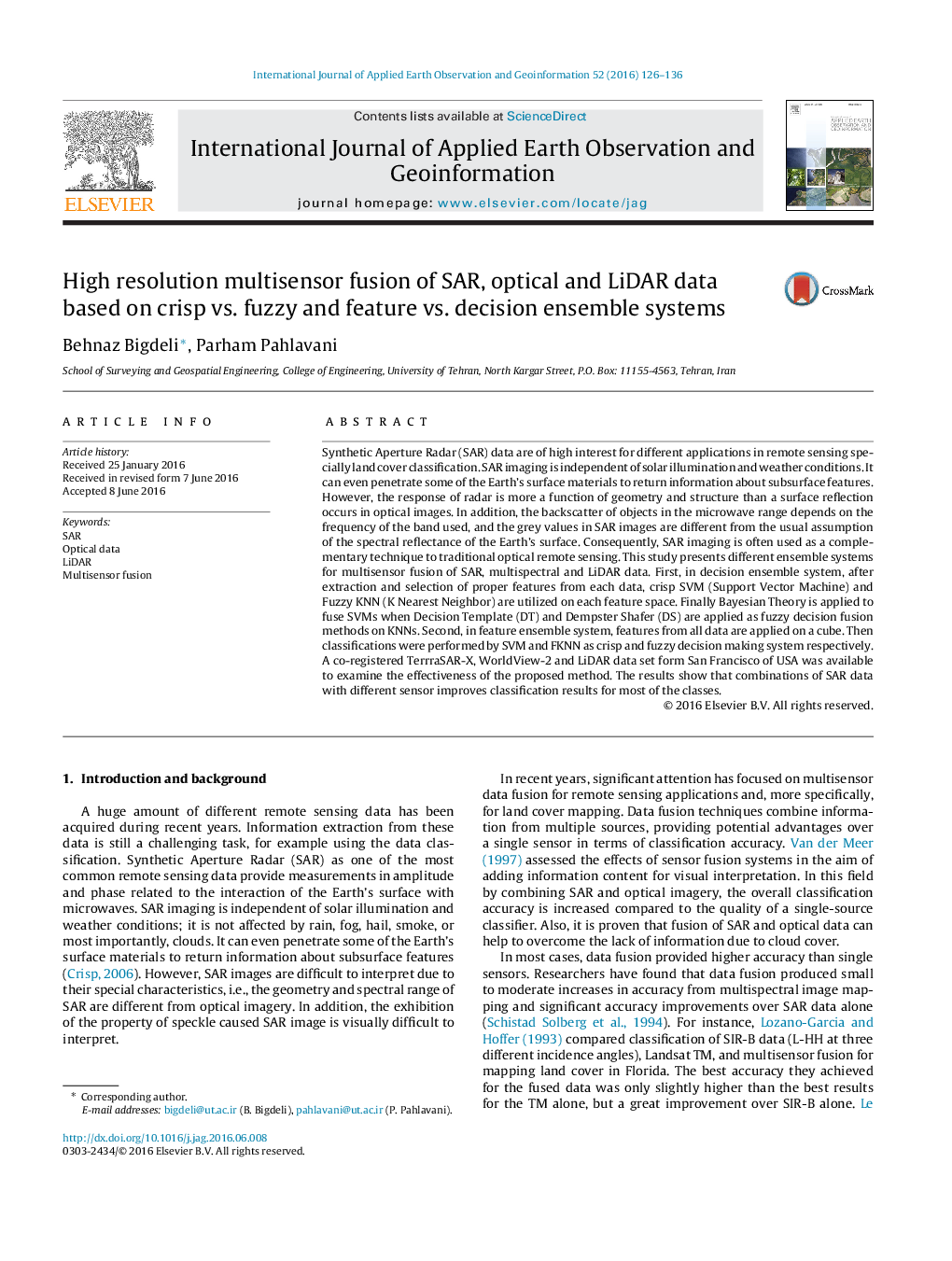| Article ID | Journal | Published Year | Pages | File Type |
|---|---|---|---|---|
| 6348475 | International Journal of Applied Earth Observation and Geoinformation | 2016 | 11 Pages |
Abstract
Synthetic Aperture Radar (SAR) data are of high interest for different applications in remote sensing specially land cover classification. SAR imaging is independent of solar illumination and weather conditions. It can even penetrate some of the Earth's surface materials to return information about subsurface features. However, the response of radar is more a function of geometry and structure than a surface reflection occurs in optical images. In addition, the backscatter of objects in the microwave range depends on the frequency of the band used, and the grey values in SAR images are different from the usual assumption of the spectral reflectance of the Earth's surface. Consequently, SAR imaging is often used as a complementary technique to traditional optical remote sensing. This study presents different ensemble systems for multisensor fusion of SAR, multispectral and LiDAR data. First, in decision ensemble system, after extraction and selection of proper features from each data, crisp SVM (Support Vector Machine) and Fuzzy KNN (K Nearest Neighbor) are utilized on each feature space. Finally Bayesian Theory is applied to fuse SVMs when Decision Template (DT) and Dempster Shafer (DS) are applied as fuzzy decision fusion methods on KNNs. Second, in feature ensemble system, features from all data are applied on a cube. Then classifications were performed by SVM and FKNN as crisp and fuzzy decision making system respectively. A co-registered TerrraSAR-X, WorldView-2 and LiDAR data set form San Francisco of USA was available to examine the effectiveness of the proposed method. The results show that combinations of SAR data with different sensor improves classification results for most of the classes.
Related Topics
Physical Sciences and Engineering
Earth and Planetary Sciences
Computers in Earth Sciences
Authors
Behnaz Bigdeli, Parham Pahlavani,
